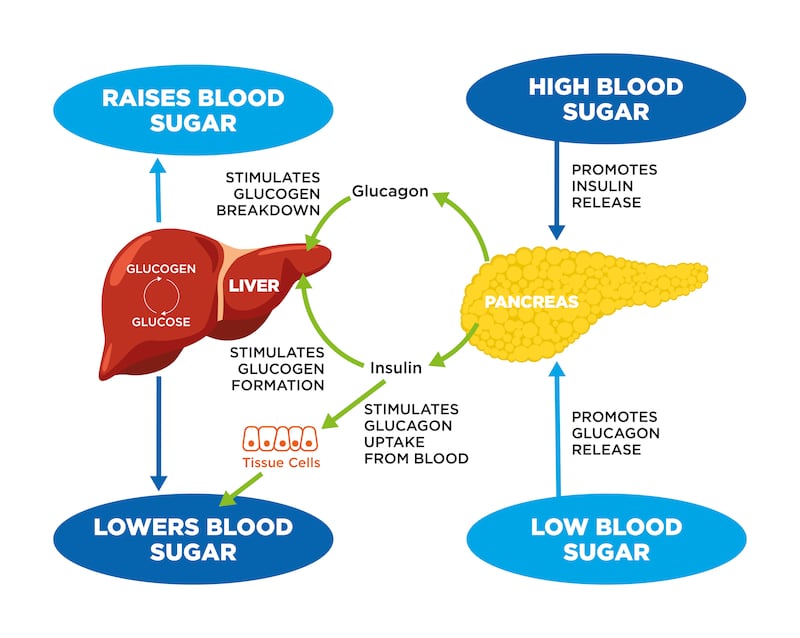When we think of diabetes, it’s likely we focus on type 2 of the disease. This occurs in adults as increasing weight and other factors exceed the capacity of the pancreas to produce enough insulin to regulate our blood sugar.

But there is another version of diabetes, type 1, which primarily affects children. It occurs when there is progressive destruction of the pancreatic B cells. When about 95 per cent of the insulin-producing cells are destroyed, then blood sugar levels rise and the clinical symptoms of diabetes develop.
The first big report on childhood diabetes, published on Tuesday, has found that Ireland has a high incidence of type 1 diabetes in the child and adolescent population. The Irish Childhood Diabetes National Register (ICDNR) reveals that we have the 10th highest reported incidence worldwide. It also shows that the national incidence increased by 69 per cent between 1997 and 2008 and, after a period of stabilisation, the incidence of type 1 diabetes in our childhood population is rising again – along with an apparent shift to an earlier age at diagnosis.
Prof Edna Roche is professor of paediatrics at Trinity College Dublin and a consultant paediatrician at Children’s Health Ireland, The national children’s hospital. She is the author of the ICDNR report. I asked her why has the incidence of type 1 DM (diabetes mellitus) begun to increase again in Ireland?
I’d been insured for just one week when I crashed into a shiny black BMW
Easter activities: 10 family-friendly days out and events to enjoy over the holidays
Hyrox, the soaring fitness trend: ‘You meet so many different people, all shapes, all sizes’
The Last of Us review: Prepare to be shocked by this compelling new season
”We did the first Irish study in 1997, where the incidence was 16.3 per 100,000/year, in the top 25 per cent for Europe. The incidence rose to 37.6 per 100,000/year in 2021, an increase of 132 per cent from the 1997 baseline. In the period 2008-2021 the incidence increased 37 per cent.
“It is unclear what exactly is causing the increased incidence. The change is too fast for genetics and the trigger is environmental, not yet fully understood, which triggers the development of autoimmunity early in life with the disease development occurring at different rates thereafter. This environmental effect is shown when those from an area of low incidence move to an area of high incidence [and] they adopt the high incidence rate.”

She explains the likely triggers for autoimmunity are viral infections, likely subtypes of enteroviruses encountered early in life. The actual onset of type 1 diabetes occurs later, probably as a result of a separate viral illness, which puts the pancreas under renewed pressure leading to a clinical diagnosis. The autoimmunity triggers pancreatic B cell destruction, which occurs at a variable rate but it is only where about 95 per cent of the insulin producing cells are destroyed that blood sugar levels rise.
The increased incidence is happening right across Europe, she says. Other high incidence countries such as Sweden also noted a relative stabilisation between 2008 and 2013 but are now rising again with the same pattern.
How might a parent or guardian know that a child is developing type 1 diabetes?
The ICDNR launched its “TEST” campaign in May, 2021, with a target of reaching a million people with its message of the symptoms to look out for.
The acronym TEST stands for:
T = Thirst Increased
E = Energy reduced
S = Sudden weight change
T = Toilet trips increased
Prof Roche acknowledges these changes can be subtle, but are vital in making an earlier diagnosis. ICDNR monitoring over the last 14 years has identified a very high rate of a life-threatening condition among Irish children called diabetic ketoacidosis (DKA).
Are there any specific health interventions that would help to reduce the incidence of DKA?
“The big intervention is to prevent delayed diagnosis of T1 diabetes,” she says. “The aim is to promote early help-seeking by families and same-day referral to paediatric centres/emergency departments for early treatment. The ICDNR is collaborating with Diabetes Ireland in the TEST campaign to increase awareness of T1D and promote early help-seeking. The under-fives and adolescents are those most at risk.”













